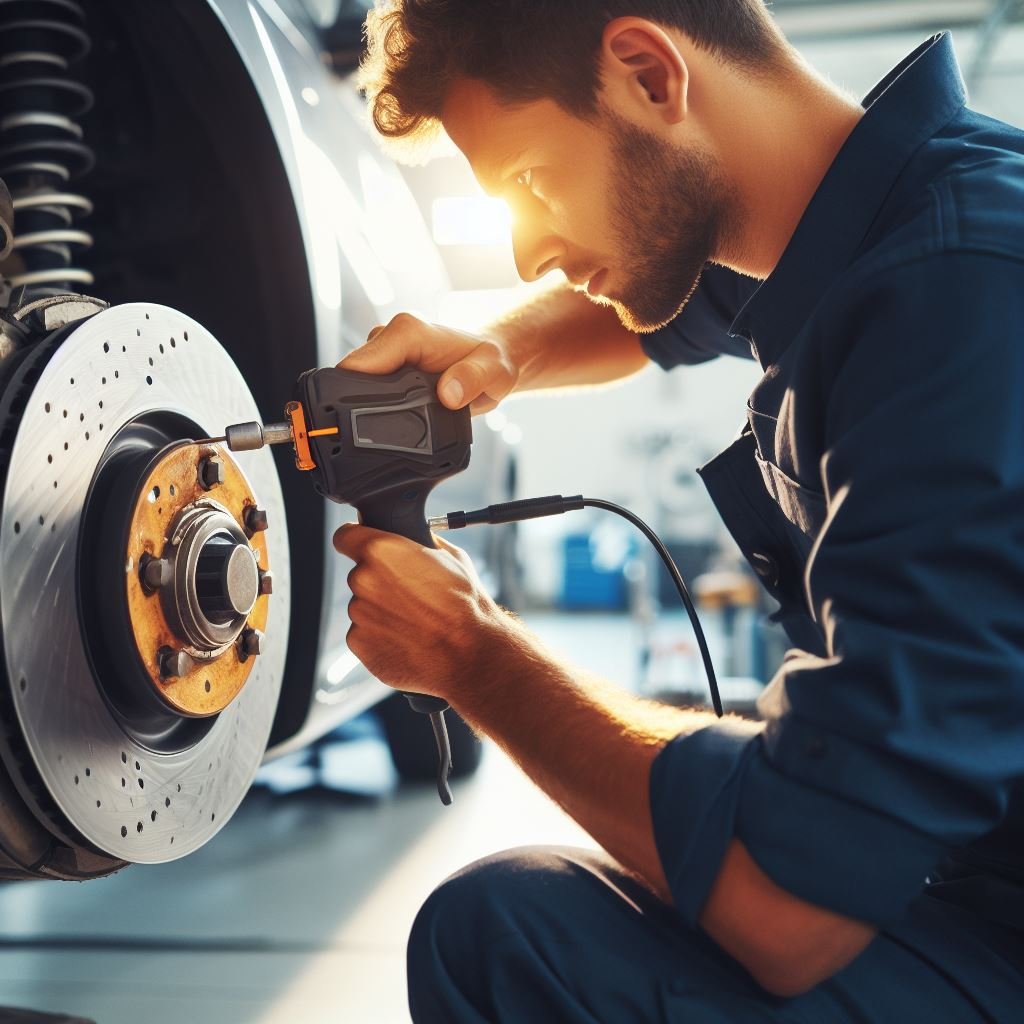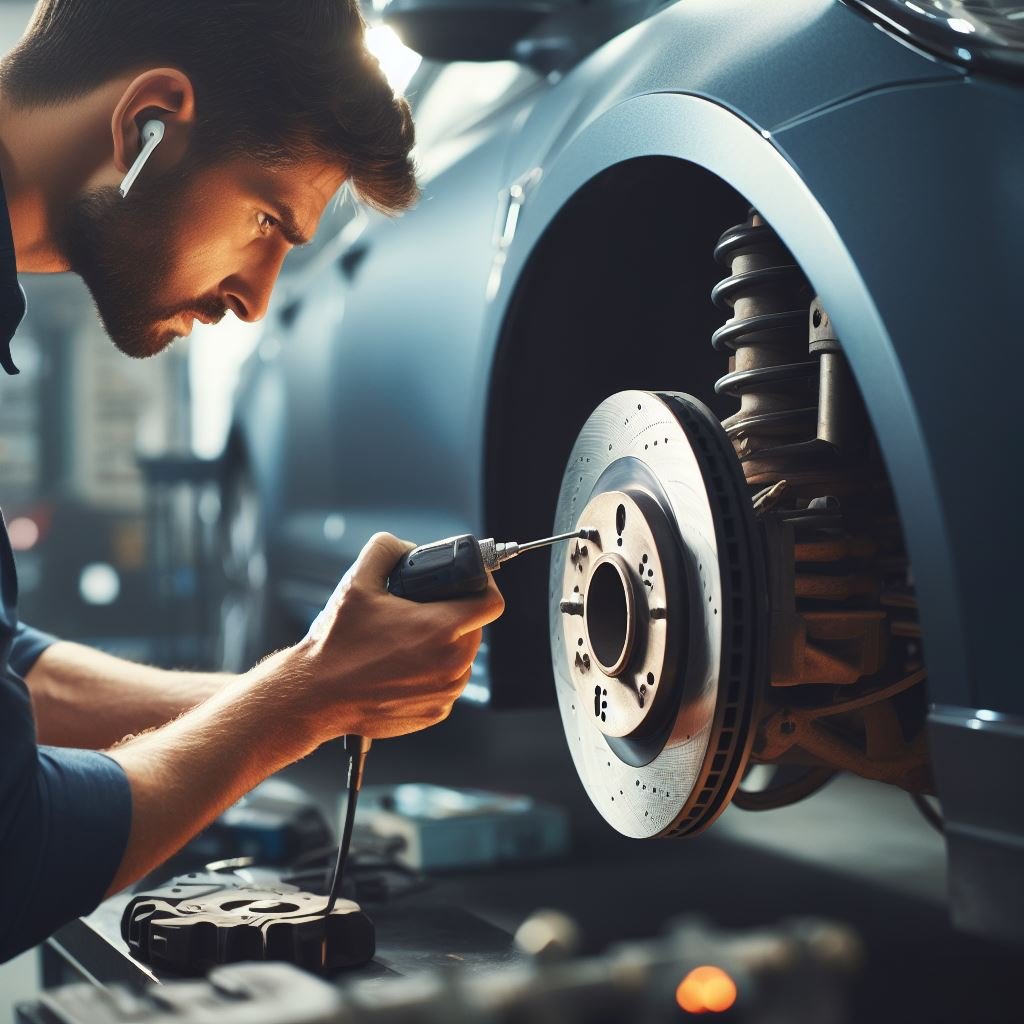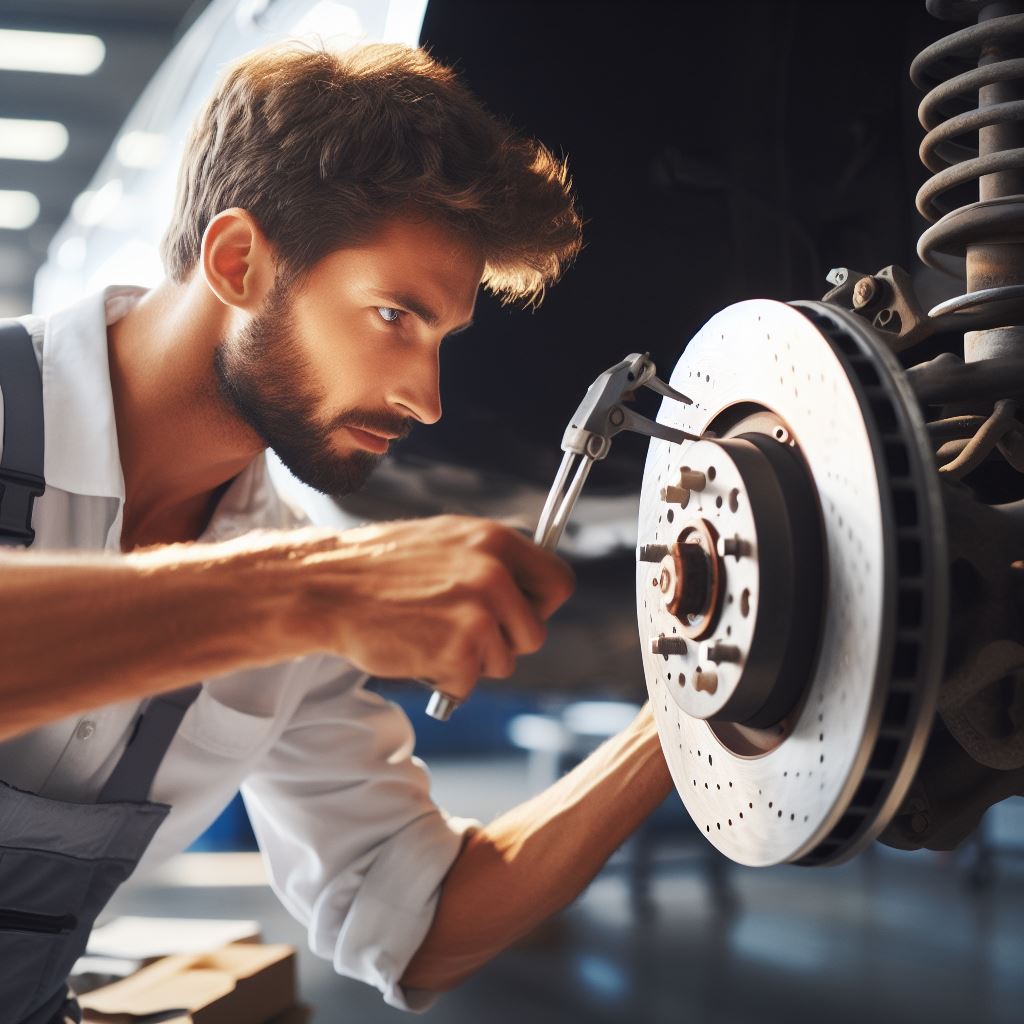As car enthusiasts, we all know the excitement of driving on a winding road with the wind in our hair and the adrenaline pumping through our veins. But what happens when that exhilarating experience is suddenly ruined by a shaky steering wheel and a pulsating brake pedal? You guessed it – rotor warping. This pesky issue can turn a thrilling ride into a frustrating one, and understanding its causes and prevention techniques is crucial for any car owner.
In this blog, we’ll dive into the world of rotor warping and equip you with the knowledge to keep your car running smoothly. Rotor warping occurs when the metal discs (rotors) that connect to your car’s wheels to slow down or stop the vehicle become distorted. This can happen due to excessive heat, uneven braking, or improper installation.
The result? A bumpy, shaky ride that can be dangerous and costly. But fear not, fellow car lovers, as there are ways to prevent this issue and keep your car in top shape. One of the main causes of rotor warping is excessive heat.
This can happen when you continuously brake hard or when your brake pads are worn out. The heat generated can cause the rotors to become misshapen, resulting in that dreaded pulsating sensation. Another cause is uneven braking, which can occur when your brake pads are not evenly pressed against the rotors.
Lastly, improper installation of the rotors can also lead to warping, highlighting the importance of getting your car serviced by a qualified professional. So, how can you prevent rotor warping and keep your car running smoothly? The key is to be mindful of your braking habits and to get regular maintenance check-ups. Avoiding sudden, hard braking and replacing worn-out brake pads can help prevent excessive heat buildup.
Getting your car checked by a certified mechanic can ensure that your rotors are installed correctly and catch any issues before they escalate. In conclusion, as much as we love the thrill of driving, dealing with rotor warping is not something any of us want to experience. Understanding its causes and taking preventive measures can save you time, money, and the frustration of a bumpy ride.
Key Takeaway
- Rotor warping occurs when the metal discs (rotors) connecting to the wheels become distorted
- Main causes include excessive heat, uneven braking, and improper installation
- To prevent warping, be mindful of braking habits and get regular maintenance check-ups
- Avoid sudden, hard braking and replace worn-out brake pads
- Get car checked by a certified mechanic for proper installation
What is Rotor Warping?

Rotor warping is a common phenomenon that affects the performance and longevity of mechanical systems, such as airplane propellers and car brake rotors. It refers to the bending or distortion of a rotor’s surface, which can lead to vibrations, noise, and reduced efficiency. In this blog section, we will delve into the causes of rotor warping and explore effective prevention techniques.
What Causes Rotor Warping?
There are several factors that can contribute to rotor warping, including: Heat: Heat is a major culprit in causing rotor warping. When rotors are exposed to high temperatures, they expand, and upon cooling, they contract.
This constant expansion and contraction can lead to warping over time.
- Overheating: In some cases, rotors may be subjected to extreme temperatures, which can cause them to overheat and deform. This is often seen in heavy-duty vehicles that are used for towing or hauling.
- Uneven Cooling: If rotors are not cooled evenly, it can result in uneven contraction, leading to warping. This can occur due to faulty cooling systems or uneven cooling after intense use.
- Material Defects: Poor-quality or defective materials used in rotor manufacturing can also contribute to warpin. These defects can cause weak spots in the rotor, making it more susceptible to warping.
Prevention Techniques for Rotor Warping Now that we know the causes of rotor warping, let’s explore some effective prevention techniques: Proper Maintenance: Regular maintenance is crucial in preventing rotor warping.
Understanding Rotor Warping: Causes and Prevention Techniques
| Causes | Prevention Techniques | Important Information |
|---|---|---|
| Rotor imbalance | Regular maintenance and balancing of rotors | An imbalanced rotor can cause uneven stress and strain, leading to warping. |
| Excessive heat | Proper cooling system and avoiding prolonged use at high temperatures | High temperatures can cause metal to expand and distort, leading to warping. |
| Manufacturing defects | Quality control checks and using high-quality materials | Defects in the manufacturing process can result in weak spots that are prone to warping. |
| Improper installation | Following proper installation procedures and using correct torque settings | Incorrect installation can cause uneven distribution of stress and lead to warping. |
| Mechanical stress | Regular maintenance and avoiding overloading the rotor | Excess mechanical stress can cause the rotor to deform and warp over time. |
| Poor storage conditions | Storing rotors in a dry, temperature-controlled environment | Moisture and extreme temperature changes can cause rotors to warp while in storage. |
Causes of Rotor Warping

Rotor warping is a common issue that affects the performance and safety of rotating machinery such as turbines, fans, and motors. It refers to the deformation or bending of the rotor shaft, which can cause vibrations, noise, and even catastrophic failure if left untreated. Causes of Rotor Warping There are several factors that can contribute to rotor warping, including:
Thermal Stress: Extreme temperature changes can cause differential expansion and contraction of rotor components, leading to warping.
- Mechanical Stress: Excessive or uneven loading, misalignment, and improper installation can put stress on the rotor, causing it to warp.
- Material Defects: Poor quality materials or manufacturing defects can make the rotor more susceptible to warping.
- Maintenance Neglect: Lack of regular maintenance and inspections can allow small issues to go unnoticed and escalate into rotor warping.
You May Also Like: Maximizing Braking Performance: The Advantages of Slotted Brake Rotors
Prevention Techniques
To prevent rotor warping and ensure the smooth operation of rotating machinery, it is important to implement the following techniques:
- Proper Maintenance: Regular inspections and maintenance can help detect and address potential issues before they escalate into rotor warping.
- Balancing: Ensuring proper balancing of the rotor during installation and maintenance can help prevent uneven loading and stress.
- Proper Lubrication: Adequate lubrication of bearings and other rotating components can reduce friction and prevent thermal stress.
- Quality Materials and Manufacturing: Investing in high-quality materials and ensuring proper manufacturing processes can prevent material defects that can lead to warping.
- Temperature Monitoring: Monitoring the temperature of the rotor and its components can help detect and prevent thermal stress. Conclusion In conclusion, rotor warping is a serious issue that can affect the performance and safety of rotating machinery.
It is caused by a combination of factors such as thermal and mechanical stress, material defects, and maintenance neglect. However, by implementing proper maintenance techniques and investing in quality materials and manufacturing, rotor warping can be prevented, ensuring the smooth and efficient operation of rotating machinery.
Frequently Asked Questions (FAQs)
What is rotor warping?
Rotor warping is a common issue in rotating machinery where the rotor shaft becomes distorted or bent, causing imbalance and vibration in the machine.
What are the causes of rotor warping?
Rotor warping can be caused by a variety of factors, including excessive heat, improper installation, material defects, and operational stresses.
How does excessive heat contribute to rotor warping?
Excessive heat can cause the rotor shaft to expand unevenly, leading to warping and distortion. This can be caused by operating the machinery at high speeds or in high-temperature environments.
How can improper installation lead to rotor warping?
Improper installation of the rotor shaft can cause uneven stresses and misalignment, leading to warping over time. This can be avoided by following proper installation procedures and using high-quality components.
What role do material defects play in rotor warping?
Material defects, such as cracks or weak spots in the rotor shaft, can cause it to bend or warp under operational stresses. Regular inspections and using high-quality materials can help prevent this issue.
Can operational stresses contribute to rotor warping?
Yes, operational stresses, such as high speeds, heavy loads, and frequent starts and stops, can put excessive strain on the rotor shaft and lead to warping. Proper maintenance and monitoring can help prevent this issue.
What are some prevention techniques for rotor warping?
Regular maintenance, proper installation, using high-quality materials, and monitoring operational stresses are all key prevention techniques for rotor warping. Additionally, implementing vibration analysis and balancing techniques can help identify and address potential warping issues before they become serious problems.
Conclusion
We have to write the conclusion as follows: In conclusion, understanding rotor warping is crucial for the safety and efficiency of any rotating machinery. It can be caused by various factors such as thermal stress, mechanical stress, and improper maintenance. To prevent rotor warping, regular maintenance and proper operating procedures must be followed. Additionally, advancements in technology and materials can also help in preventing warping. It is essential for industries and manufacturers to prioritize rotor warping prevention to ensure smooth operations and minimize downtime. By implementing these prevention techniques, we can avoid costly repairs and ensure the longevity of our machinery.

Leave a Reply